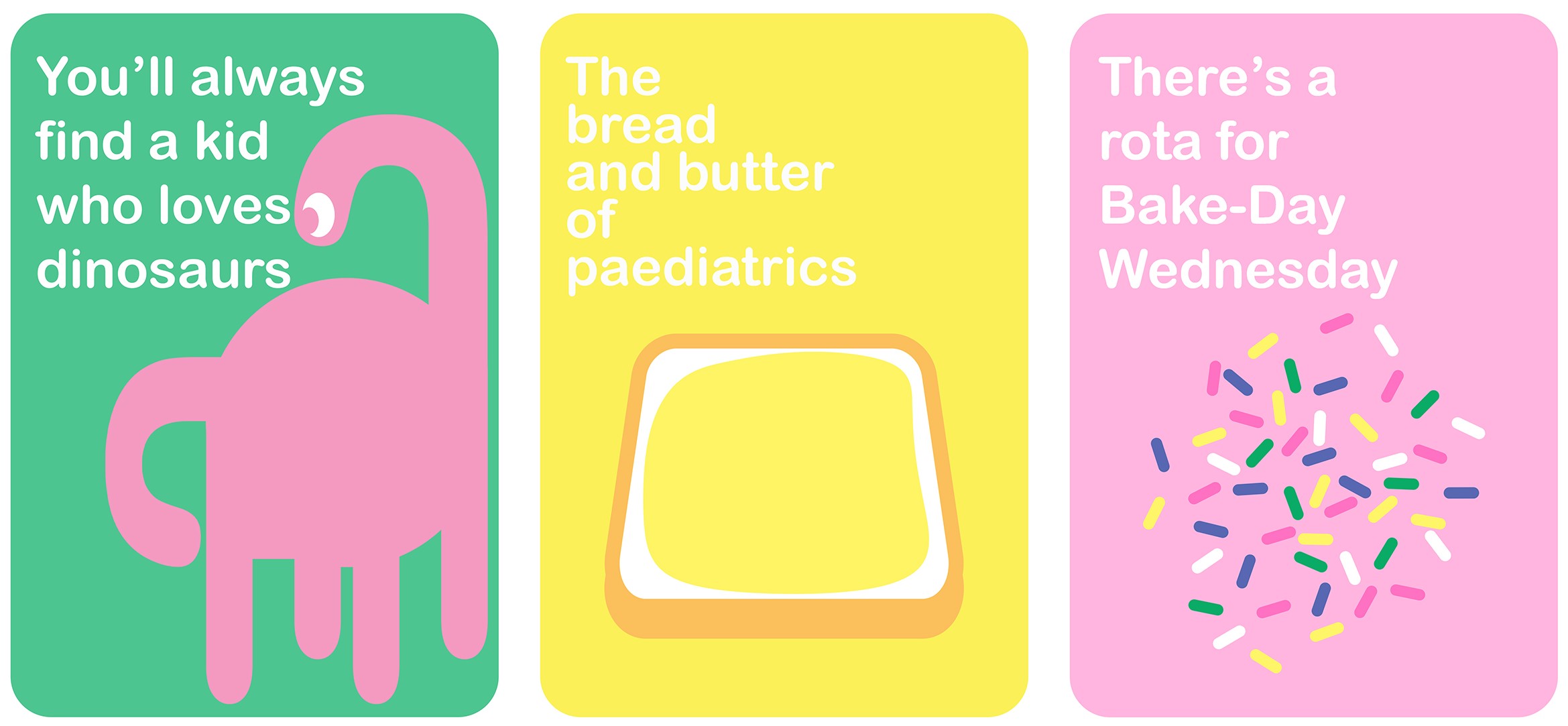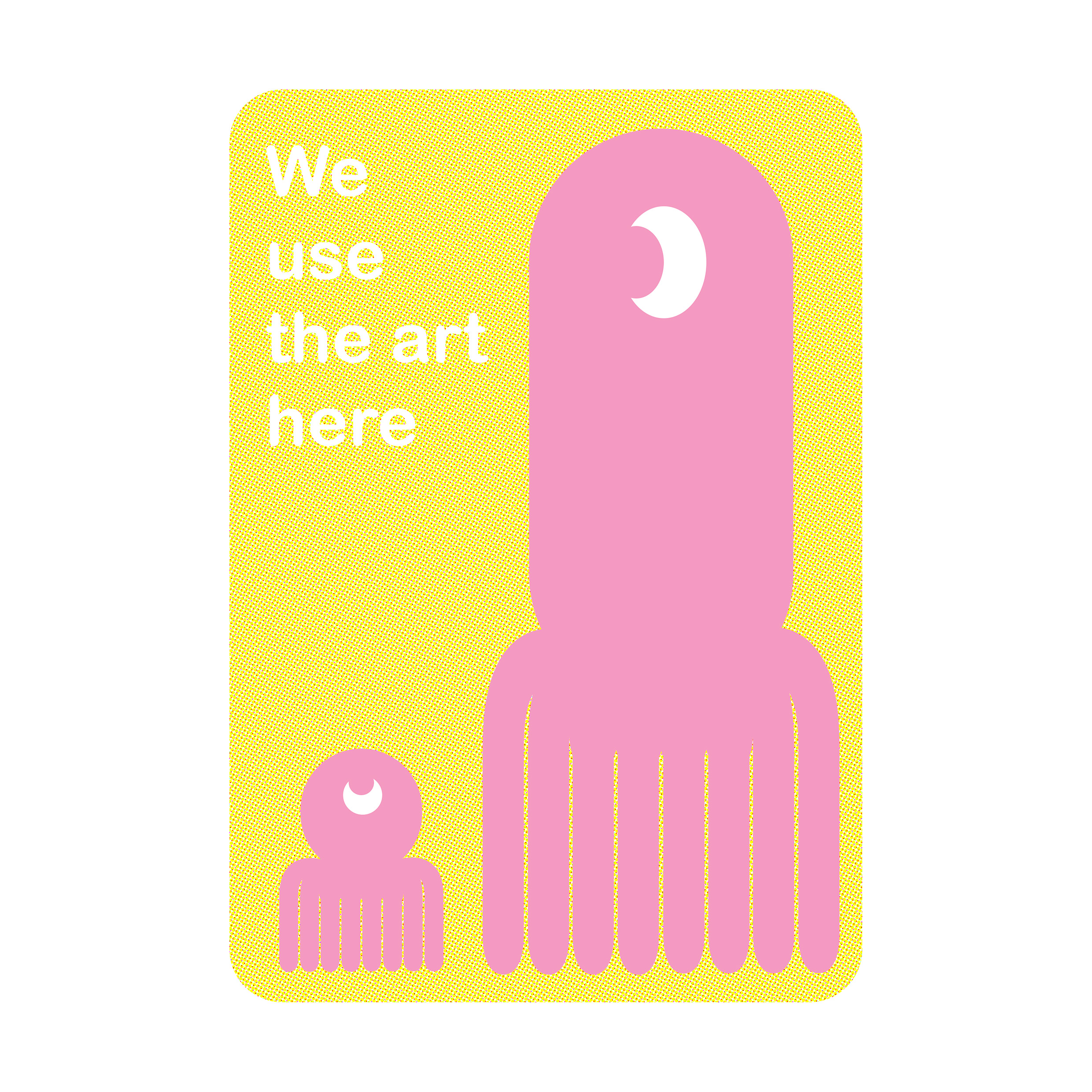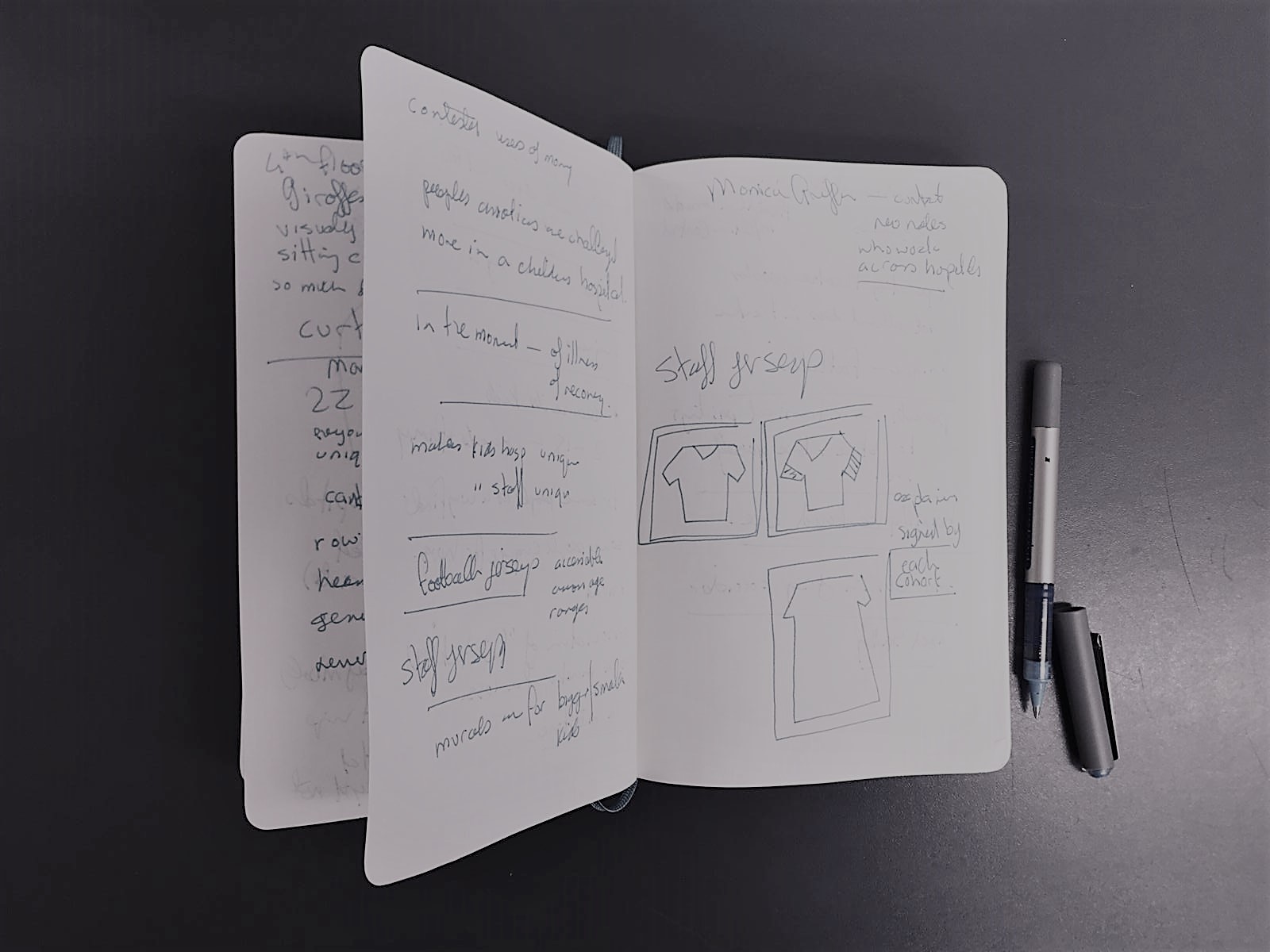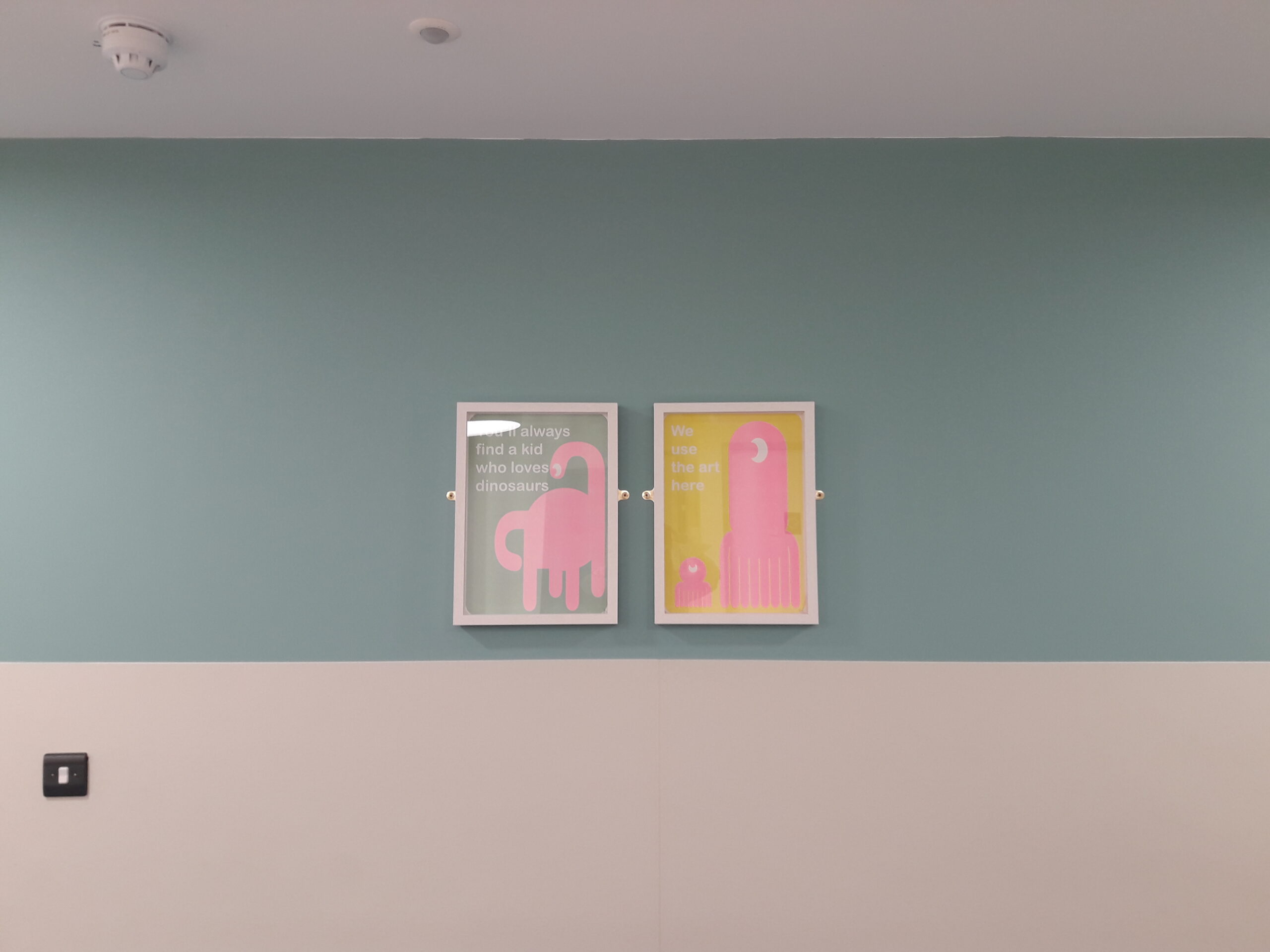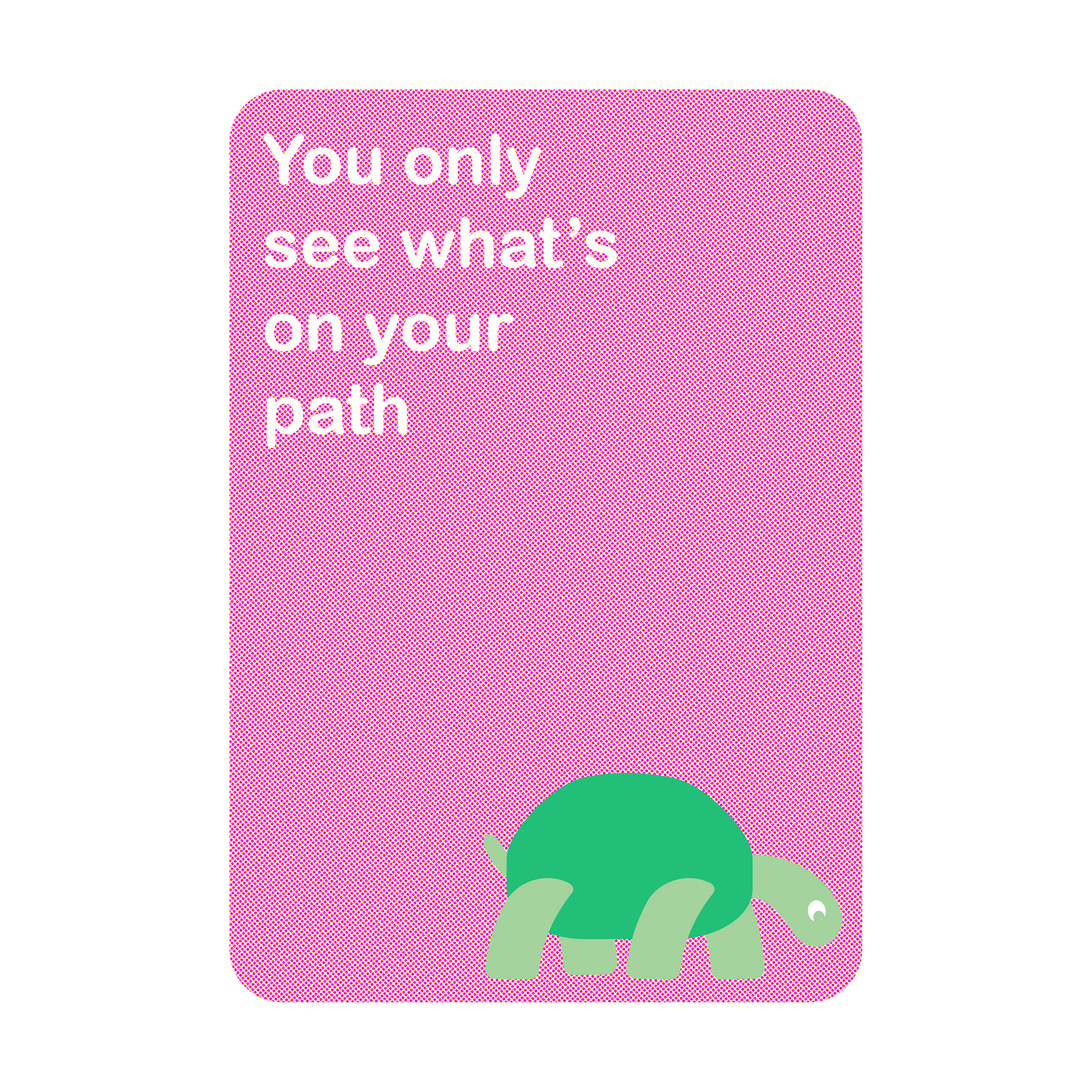Participants
In the coming years, the staff from across the three hospitals will make their move to the new CHI Children’s Hospital in the grounds of St James’s Hospital and Satellite Centres in Tallaght and Blanchardstown. Alongside the changing environment, their working practices and their connections to each other will also change. Inviting staff from across the three hospitals to take part, the artist wanted to create an opportunity for them to consider the role of art in their workplaces.
Staff across the organisation are, of course, the experts on how art is experienced in their field, since they encounter it day-to-day, noticing it and not noticing it, using it to engage children in conversation and play. Living and working alongside it, they are best placed to understand its benefits and possible impacts. As the staff embark on one of the biggest changes in their working lives, a moment to focus on art can give pause to reflect on their relationship with both their existing and soon-to-be new spaces.
Aims
Our Stores aimed:
- To create a way for staff to celebrate the existing hospitals and their unique cultures before the move to the new children’s hospital.
- To creatively consider the importance of artworks and their value in enhancing the paediatric environment for staff, for children and young people and for the wider CHI community.
- To support staff in letting go of what is familiar to them in preparation for the change that is to come.
- To capture CHI staff reflections on the role of artworks in paediatric healthcare environments and the staff cultures in these spaces.
- To get CHI staff to start thinking and talking about artworks in their workspaces, ahead of Treasure Chest – a staff led project of transferring artworks from the existing sites to the new children’s hospital and satellite centres.
- To create a series of artworks which reflect the conversations and stories that were shared between John and CHI Staff throughout the project.
Methods
John talked about his starting point for engagement as being ‘playful, discursive and staff-driven, to get a sense of the reality in which the artworks exist: not in the gaze of the curious gallery audience, but in the view of the ill child, the anxious parent, the hurried cleaner and the pressured medical staff. It’s about finding a way to get a real perspective on what art really does in the places we work and what it means; not what we say it will do.’
Armed with his notebook in hand, John ‘took up residence’ for 10 days in each of the hospital sites over several months, meeting and talking with staff across Crumlin, Tallaght and Temple Street. Locating himself in canteens, in corridors, in staff rooms and waiting areas. Catching staff while taking a break, as they worked, on the way from one place to another. It was important to be guided by the staff as to the most appropriate ways to engage. Lunchtimes, the walk home, the changing of a set of bedsheets all offered the possibility to stop and take a moment to participate in the project.
Starting with simple, open questions about place, space, the role of art in the everyday rhythm of the working day and night, the process invited participants to considered the role of art in their workplaces, both as a part of its culture and as something that impacts and changes the space. Throughout the course of the project, John found himself invited to multi-disciplinary team meetings, to lunch, to uncover secret spots and to discover treasured items.
John had conversations with a diverse range of staff across all parts of the hospital which offered a significant insight into the impact artworks have in CHI. Engagement with participants took many forms from the snatched moment, offering insight into how art can divert a child or young person during a clinical procedure, to time spent chatting about the ways an artwork can offer comfort and stillness within the constant pace and change of hospital life.
Staff told John about the artworks they loved, the ones they hated, the paintings that reminded them of past moments, the artworks that had become part of the culture of the organisation. The artist captured these conversations, gathering the thoughts and ideas of staff, noticing what was important to them, uncovering the ways the culture of the hospitals was expressed. These creative conversations captured opinions and judgements, memories and stories, beliefs, ideas and humour. The artist brought these back to his own practice and created a series of nine artworks which took the staff’s own words as a starting point in developing imagery.
Artistic Outputs
The Our Stories conversations inspired a series of nine risographic printed artworks made by John at the Damn Fine Print Studios in Dublin. These artworks connect and unite the stories and ideas that emerged across all the CHI hospital sites.
These child-friendly works now hang across five sites – CHI Crumlin, CHI Temple Street and CHI Tallaght, in the Connolly Outpatient and Urgent Care Centre and at the CHI Head Office in Dublin 8. The aim of the artworks is to inspire our conversations to continue, to mark a moment in time and to enhance the spaces in which the CHI community comes together.
The Our Stories Collection was launched at an online event in spring 2021.
Evaluation Methodology
The CHI Arts in Health Programme Curators and CHI Organisational development Team met with the artist to respond to and review the project on an ongoing basis. The artist provided an evaluation and feedback report to CHI and participants were asked to give feedback on being involved in the project.
Evaluation Outcomes
The project was well received by the staff who participated. Lori Ekstrom, a scientist based in Crumlin, said of participating in the project:
‘Since 1999, I have been a scientist in the Genetics department of Crumlin Hospital… I have always believed that art plays a pivotal role in our mood, wellbeing, and perceptions especially in a hospital environment. However, it was not until a chance meeting on the main corridor in Crumlin that I realised how important it was both to me and to CHI as a whole… Through Our Stories I came to know that there is an art curator in CHI (something I only associated with art galleries), that there is an arts department and I also learned of upcoming projects including Treasure Chest with which I also became involved. These projects have really made me feel part of the CHI team which was not always the case previously as the department is physically isolated at the back of the Crumlin campus… It is the merger of medical teamwork and the creative arts that have led to a genuine feeling of community in CHI.’
Lori concluded:
‘I would urge you, the next time you’re walking down the corridor, to spend a few minutes looking at the art and see how important it is to the overall ethos and culture of the hospital. Art helps us all to see the hospital sites as a community of people rather than just separate buildings with wards, theatres, corridors and offices. I am so glad that I met John by chance on the corridor that day – it has opened my eyes to the fact that yes, it is okay to be a scientist and also to see the benefit of art.’
Artist John Conway reflected on the project:
‘Artists often have the unique privilege of being able to visit interesting and complicated spaces; observing and taking the pulse. I was very much welcomed by all the CHI staff I met through this project. They gave me an insight into working cultures across the different CHI sites. I got an understanding of what art does at the coal face in an acute health setting. The way art works for staff and children can be very different to how artists might expect.’
Ann Quinn, CHI People and Change Lead at the time of the project, added:
Many of the staff who participated in Our Stories went on to be part of the Treasure Chest Project, a staff-led decision making project about the transfer of artworks from the existing hospitals to the new children’s hospital and satellite centres. Treasure Chest began in Spring 2021.
Documentation and Dissemination
- The artist kept a reflective journal and sketches of stories and conversations heard throughout the project.
- An online launch of the project took place in March 2021.
- The project featured across various online outlets including HSE Health Matters and artsandhealth.ie.
- The project featured across CHI staff platforms.
- Learn more about the project and artworks through this short film.
